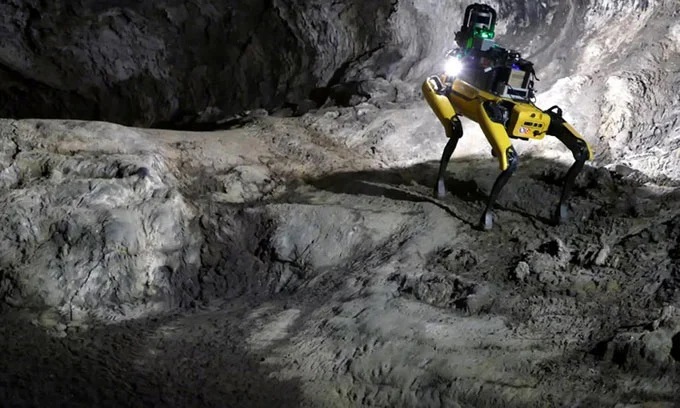With the ability to move flexibly, overcome obstacles and stand up in the event of a fall, the 4-legged robot can explore hard-to-reach places.
NASA researchers presented the “robot dog Mars” at the American Geophysical Association (AGU) annual meeting on 12/14. The 4-legged robot is equipped with an AI and many sensors. It can move around in a way that wheeled robots like Spirit, Opportunity, Curiosity, or Perseverance cannot.
The versatility, durability and modern sensors of the new robot allow it to avoid obstacles, choose a path and map underground caves. The caves of Mars may provide refuge for future humans and may also contain traces of ancient life.
Traditional Mars rovers typically only operate on relatively flat surfaces. However, there are many interesting and scientifically valuable areas on Mars that can only be reached by walking through difficult places or by going underground. “Walking” dog robots are well suited to these tasks. Even if they fall, they can get up on their own.
The Martian dog robot is 1/12 lighter than current expedition robots and can move much faster, reaching a normal walking speed of 5 km / h in our test. Meanwhile, Curiosity moves across the surface of Mars at a speed of around 0.14 km / h.
The new robot, called Au-Spot, is an improved version of the Spot, a 4-legged robot built by Boston Dynamics. More than 60 scientists and engineers from the CoSTAR project added sensors and software to make the robot suitable for the Martian environment.
Au-Spot processes input data from Lidar (laser pulse sensors), thermal, motion and image sensors for 3D mapping. This robot uses AI to determine structures to avoid and also find objects of scientific value. Advanced communications equipment also allowed her to send data to the ground while exploring below.
CoSTAR tests the Au-Spot in a series of obstacle courses, tunnels, corridors, stairs and ramps. They are also mining it in outdoor locations that simulate landscapes of Mars, such as lava caves in northern California. This series of challenges shows robots able to navigate, navigate through rocks, and map deep caverns.


